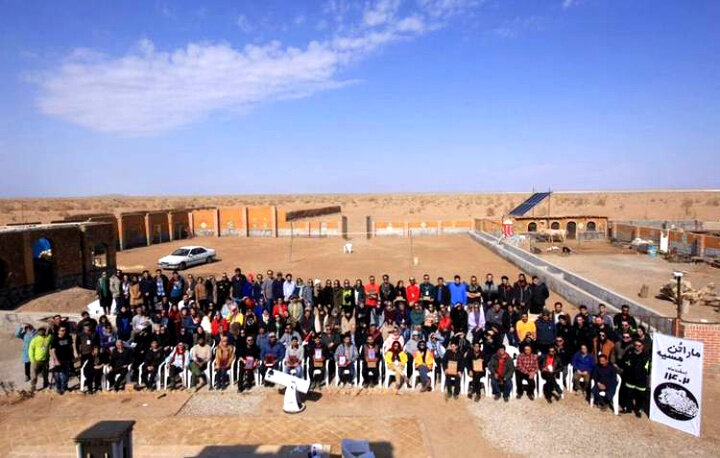Messier marathon brings amateur astronomers to Iran’s central desert edge

TEHRAN – On March 7 and 8, tens of amateur astronomers gathered under a dark starry sky on the edge of Iran’s central desert to observe the annual Messier marathon, famed as the country’s biggest astronomical event.
The event took place at the Chah-e Jam tourist area on the northern edge of Shahrud, Semnan province, CHTN reported.
“The competition is the largest and most important national astronomy event held in the country,” Shahrud’s tourism chief said on Saturday.
Morteza Nazari further mentioned that with the coordination of the Cultural Heritage, Tourism, and Handicrafts Department of Shahrud and the National Astronomy magazine, this year’s Messier marathon took place in the Chah-e Jam tourist area of Shahrud.
Participants and enthusiasts, according to Nazari, gained fresh observational experience in the field of astronomy without prior knowledge or telescopes in the educational section of this event.
Highlighting the presence of top astronomers from across the country, Nazari added that the event hosted 180 astronomers and judges in two sections: education and competition.
The official also emphasized that the dark skies of the Chah-e Jam area are among the most beautiful and accessible dark skies in the country. “This event, aimed at promoting astronomical tourism, was held in (near) Shahroud for the first time.”
A Messier marathon is an endeavor, often coordinated by amateur astronomers, aimed at spotting as many Messier objects as possible within a single night. The Messier catalog, compiled by French astronomer Charles Messier during the late 18th century, comprises 110 relatively bright deep-sky objects, including galaxies, nebulae, and star clusters.
The number of Messier objects observable in one night varies based on several factors, such as the observer's location, the duration of daylight and nighttime, and the season, given the varying positions of Messier objects relative to the Sun throughout the year.
Incomplete Messier marathons can be undertaken at other times of the year, with the number of visible objects depending on the season and location. There is a brief period around the autumnal equinox when most objects can be seen.
Marathons are often arranged by local astronomy organizations or societies as special star parties, usually held annually. Some clubs offer certificates or awards for participation or for reaching a predetermined number of objects.
AM
Leave a Comment